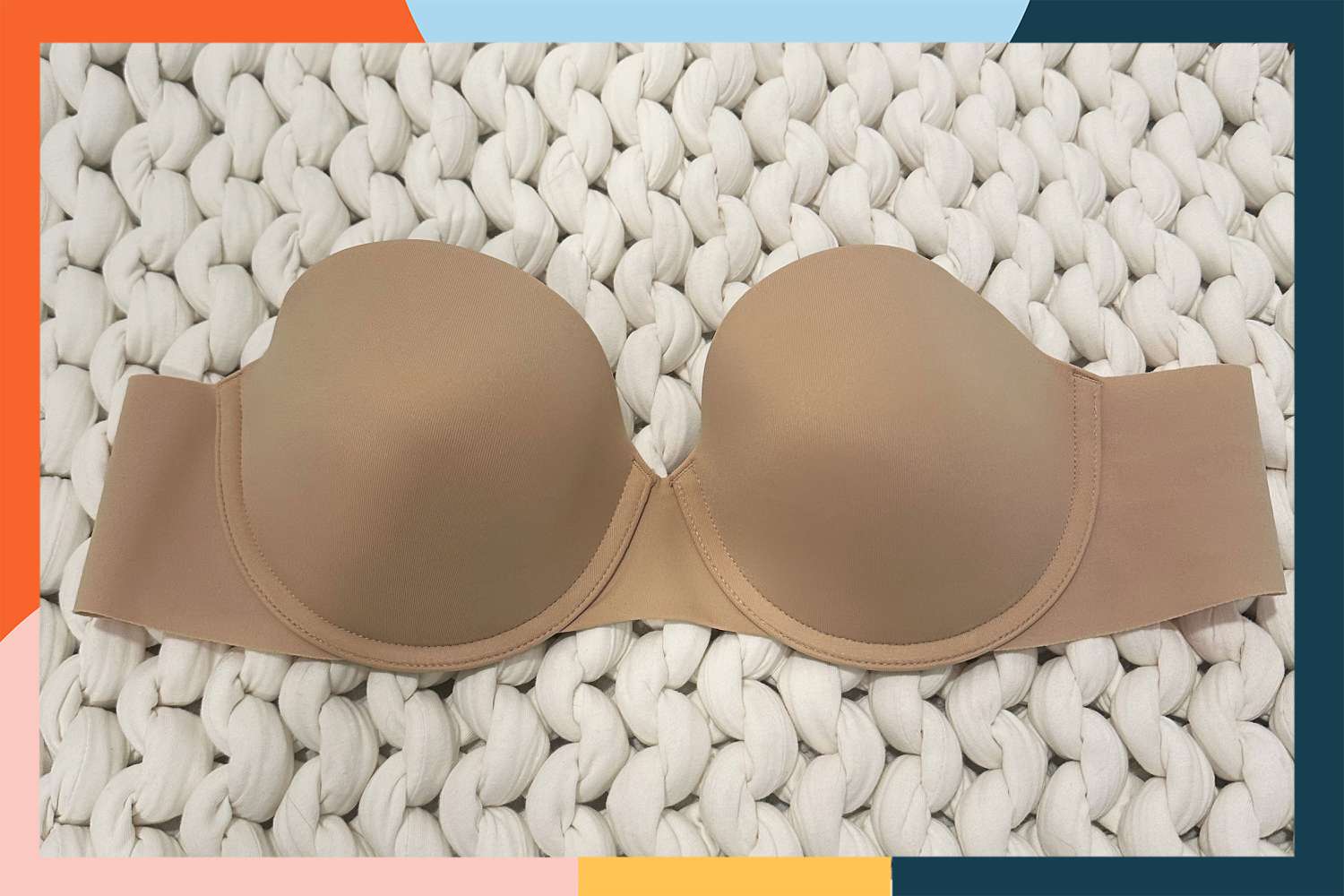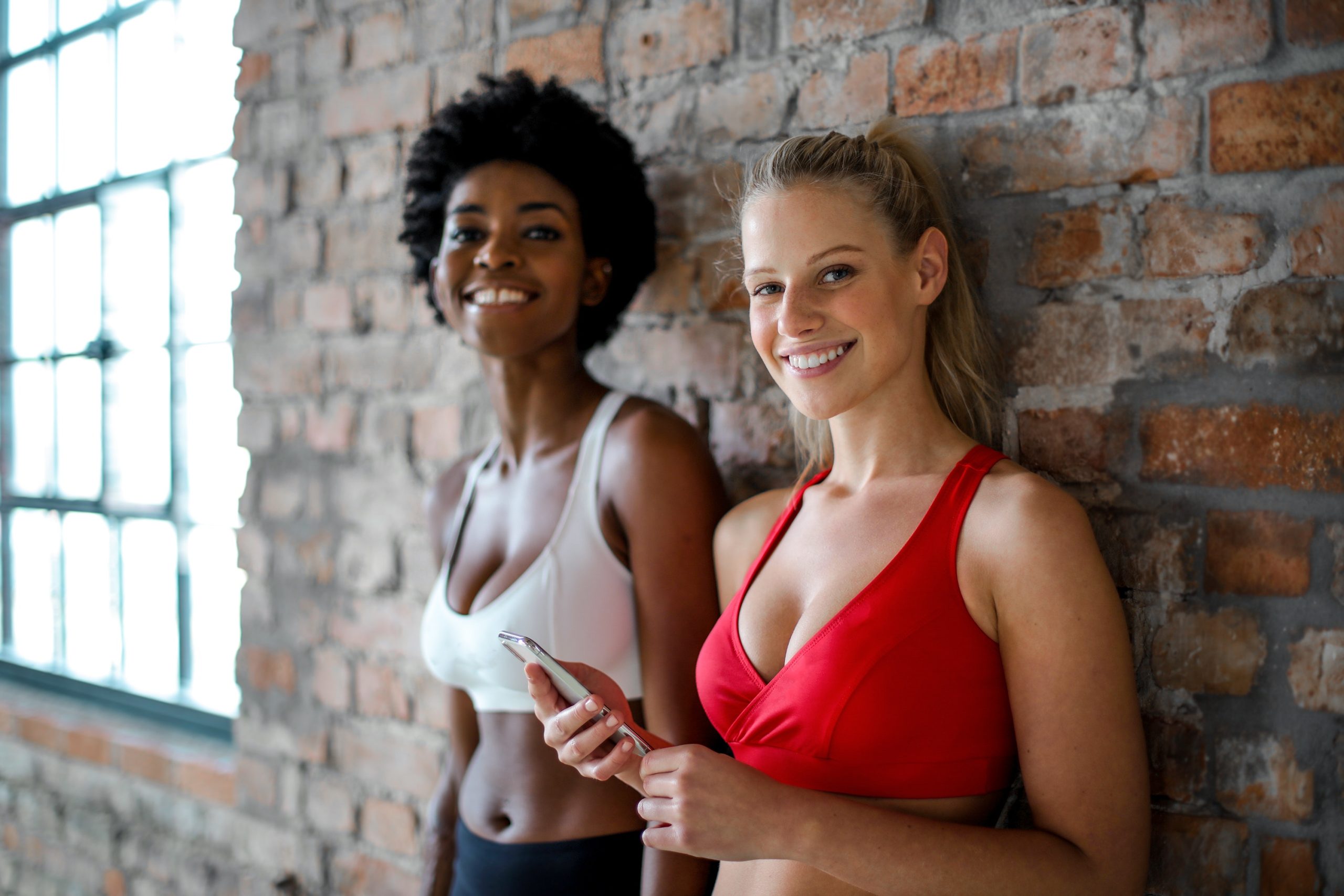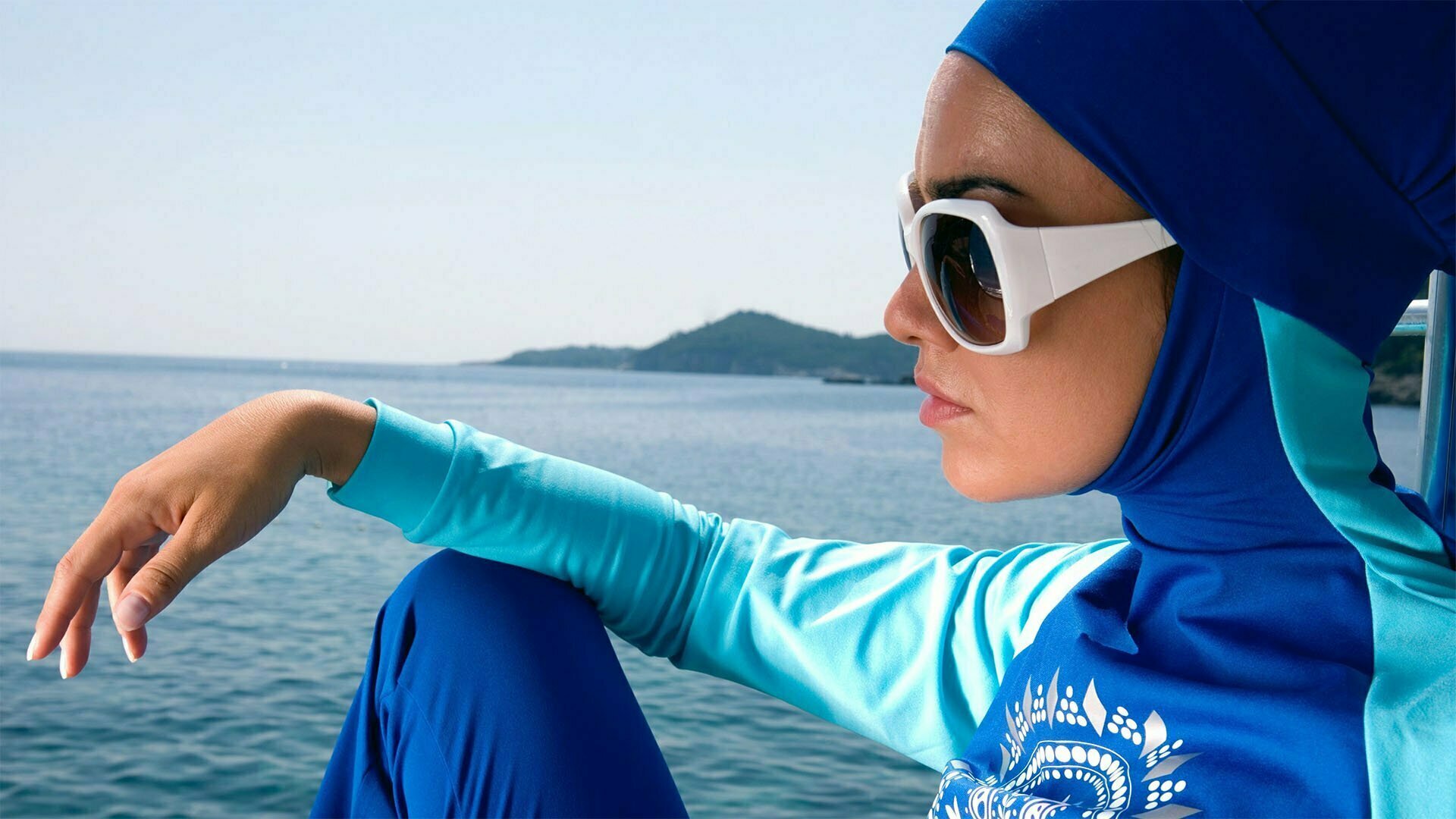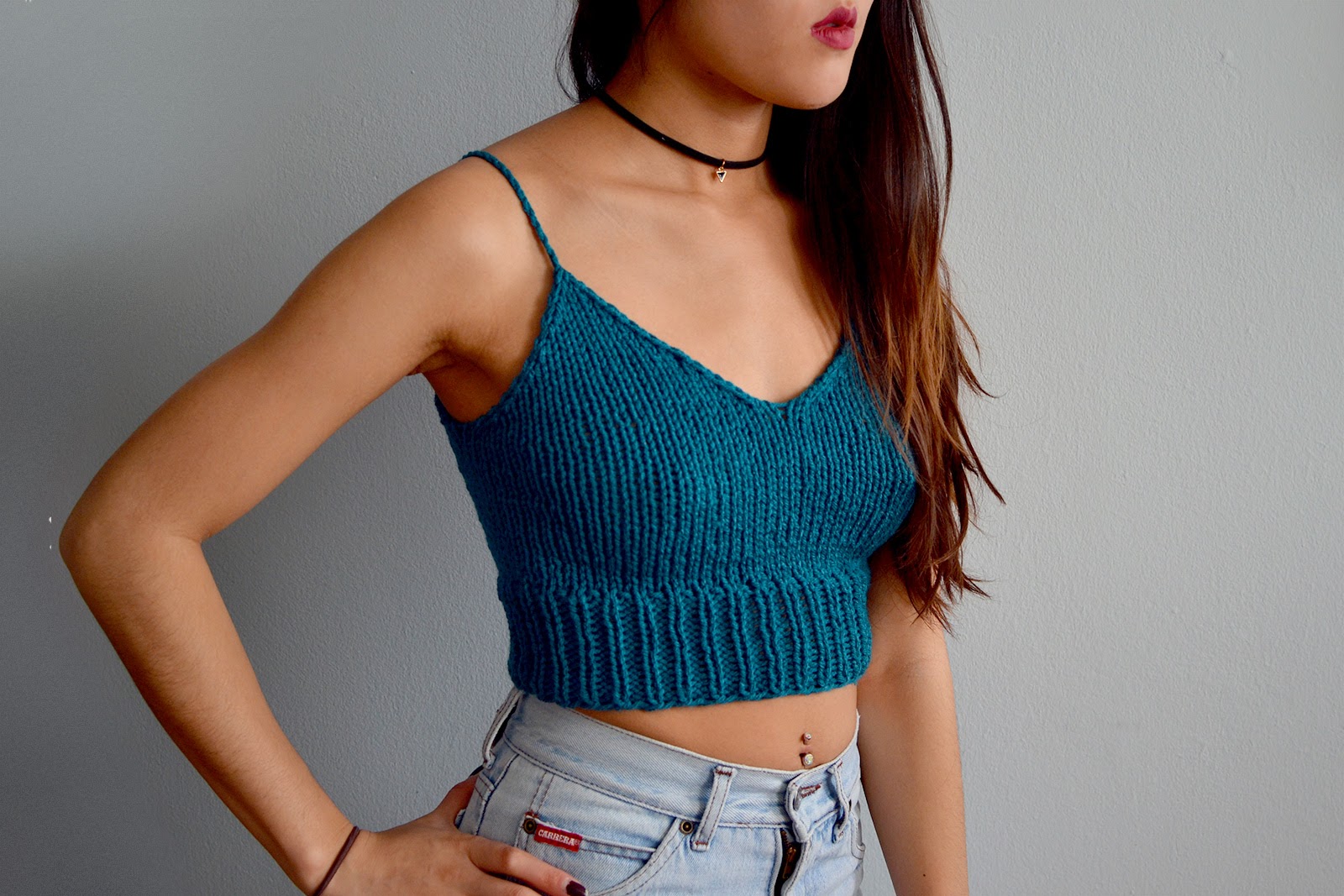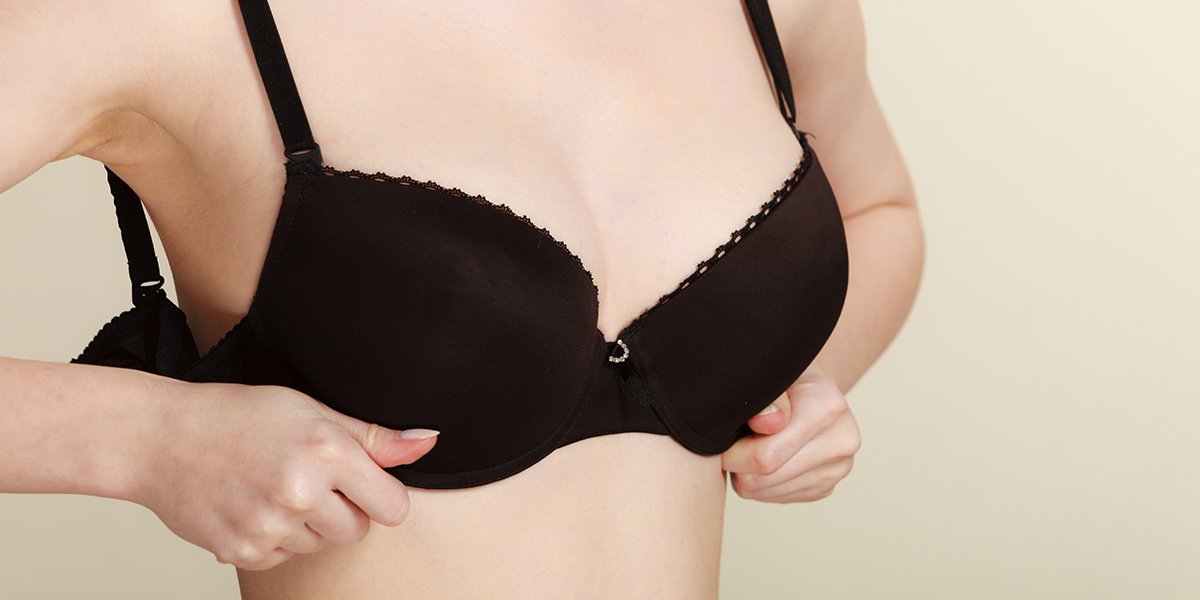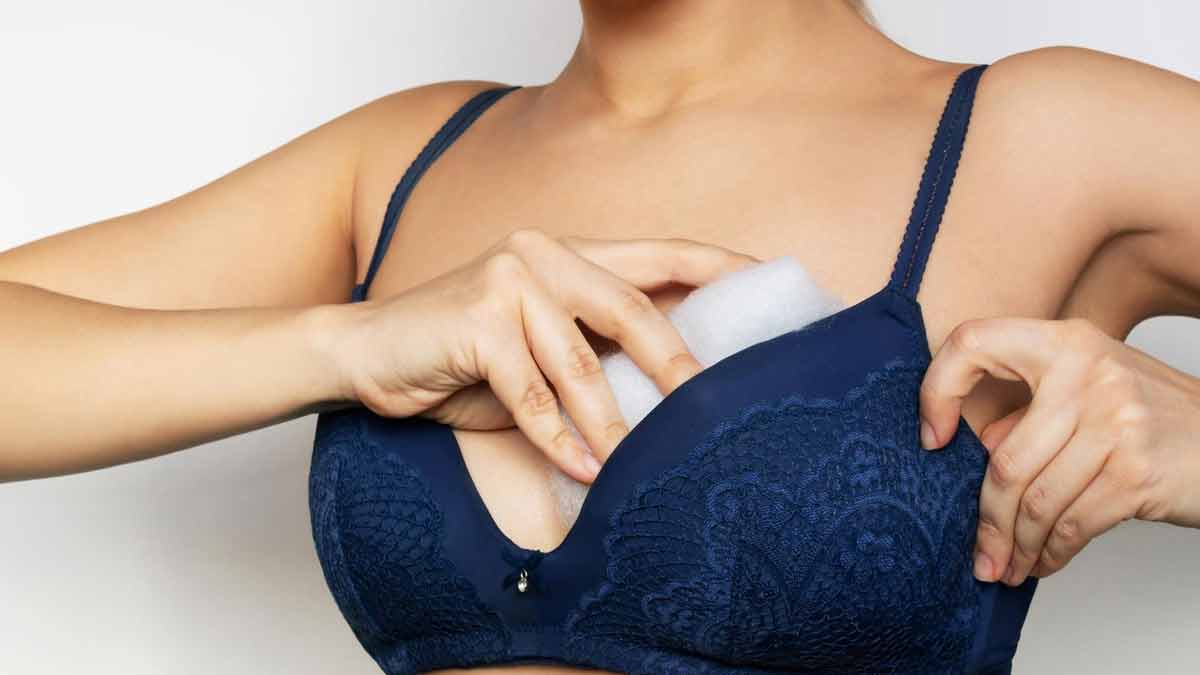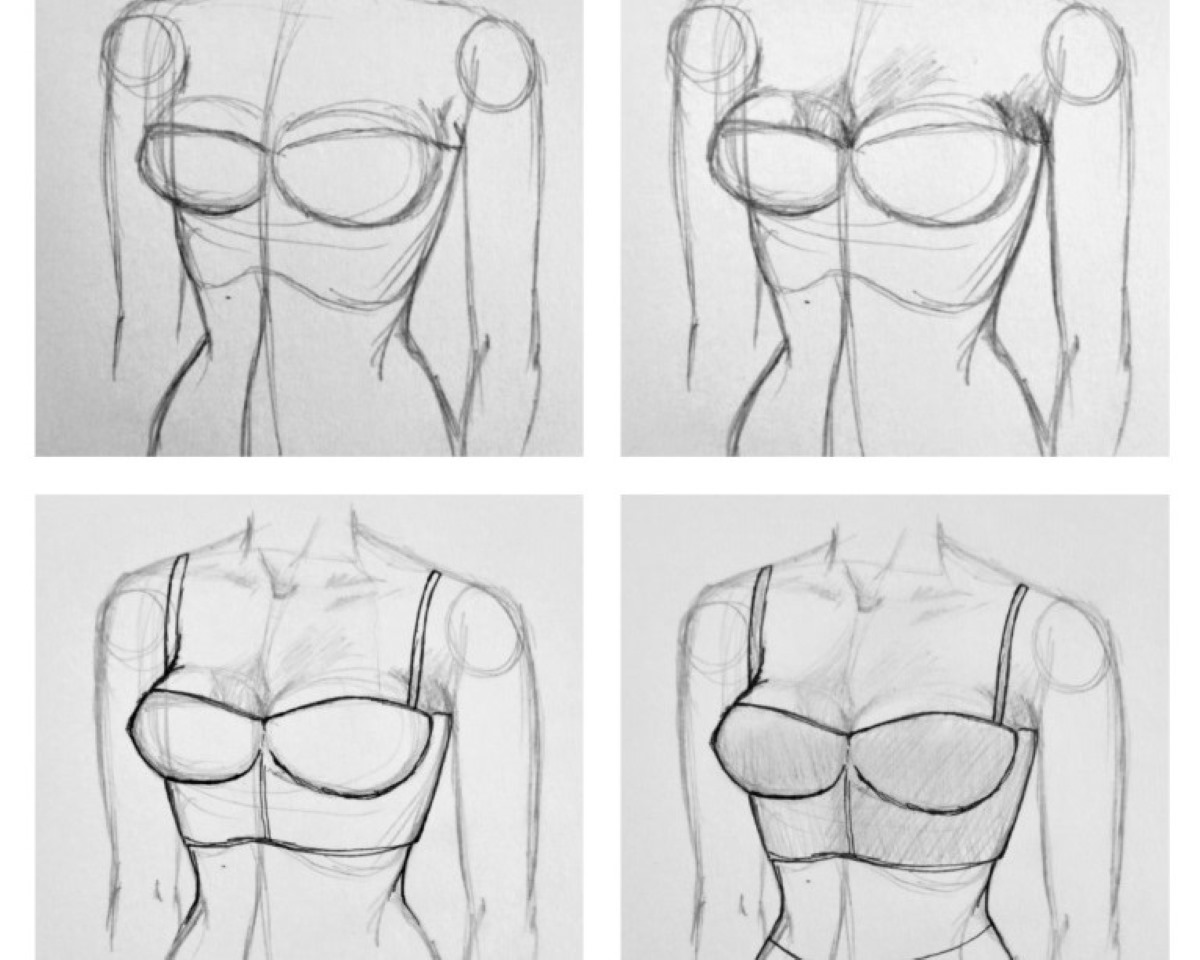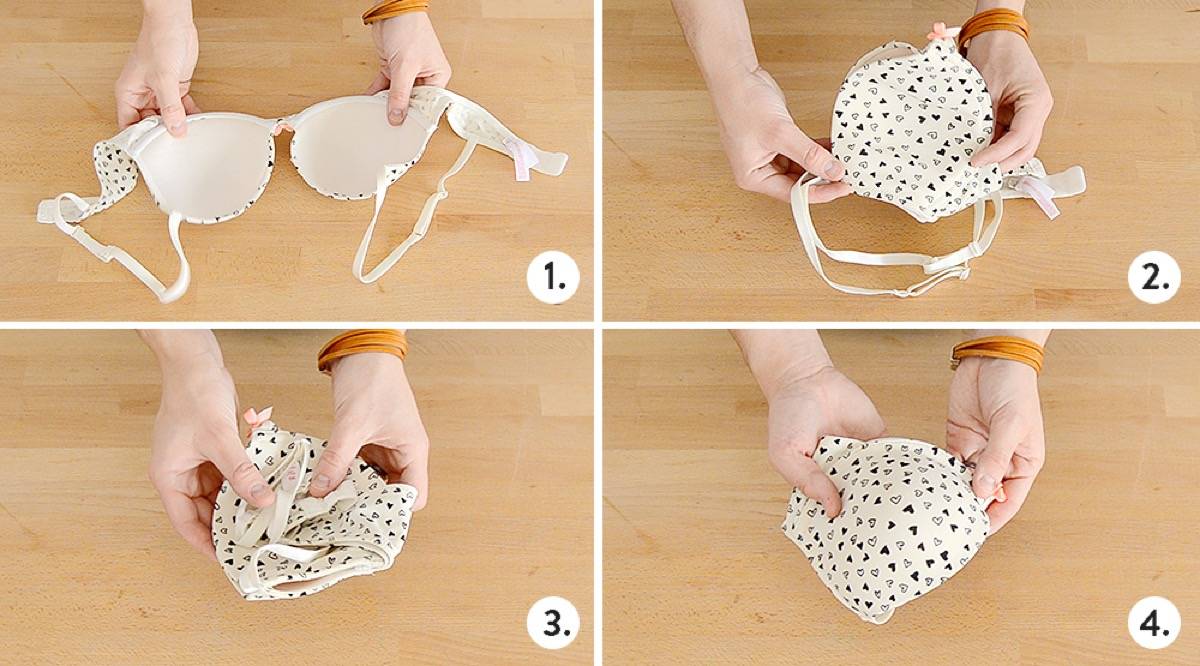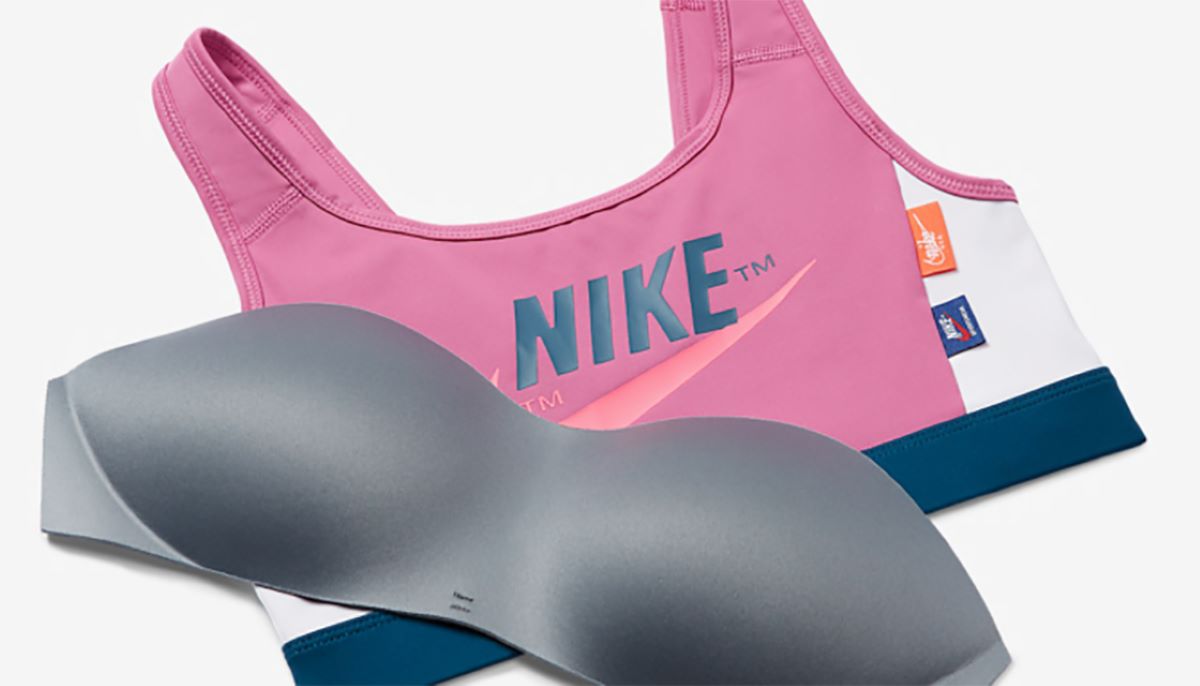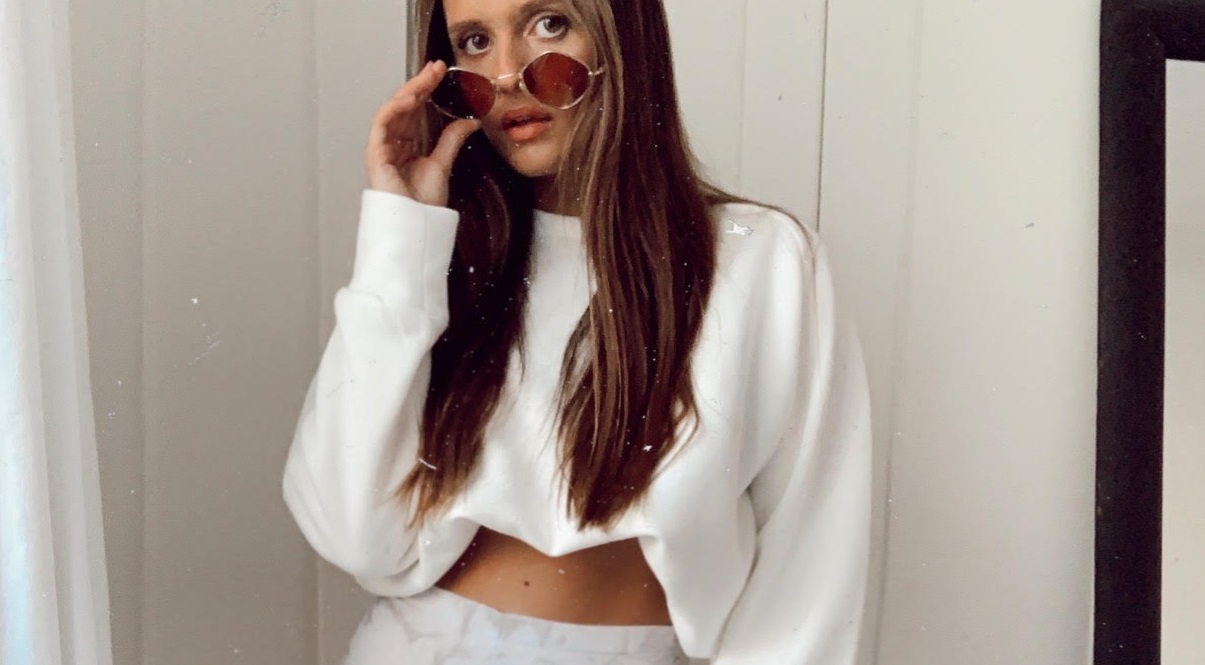Home>How-to Guides>For Women>How To Buy A Bra
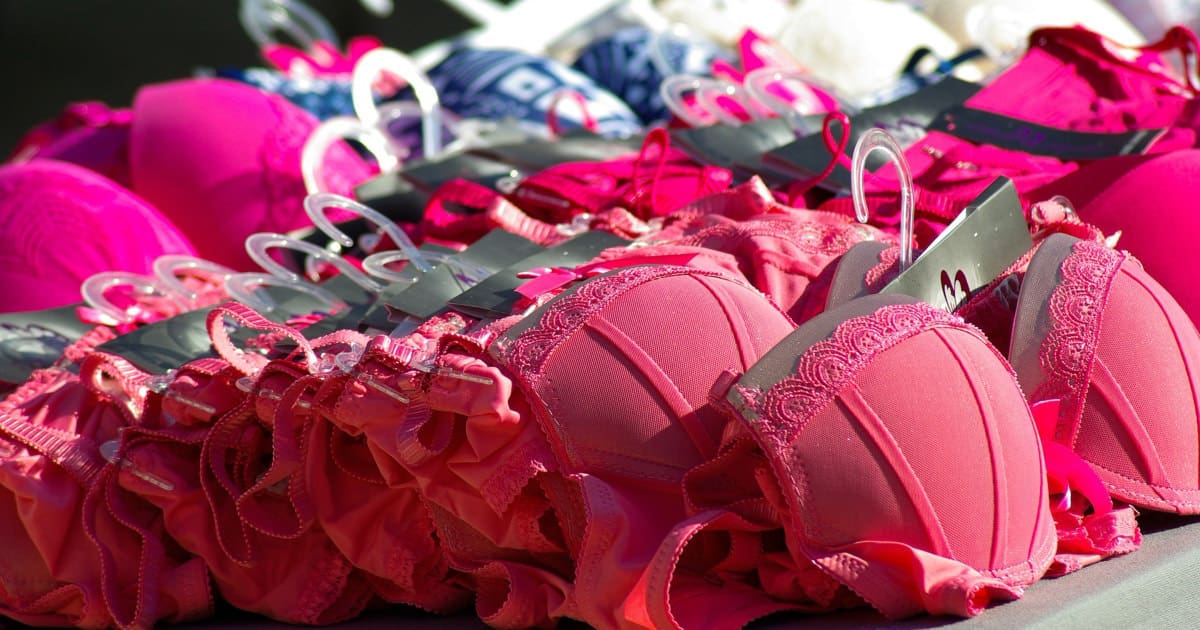

For Women
How To Buy A Bra
Modified: September 23, 2023
Learn how to buy a bra for women with our expert tips and advice. Find the perfect fit, style, and comfort for the ultimate confidence.
(Many of the links in this article redirect to a specific reviewed product. Your purchase of these products through affiliate links helps to generate commission for Under-tec.com, at no extra cost. Learn more)
Table of Contents
How To Buy A Bra
Buying a bra can be a daunting task, but with the right knowledge and tips, you can find the perfect fit and style that suits your needs. Whether you’re looking for everyday comfort or a special occasion, here are some guidelines to follow:
First and foremost, it’s important to know your correct bra size. Many women are wearing the wrong size bra, which can lead to discomfort and lack of support. To find the right size, you can either measure yourself at home or visit a professional fitter at a lingerie store.
There are several key measurements to consider when determining your bra size, including your band size and cup size. The band size is the measurement around your torso just under your bust, while the cup size is determined by the difference between your band size and the measurement around the fullest part of your bust.
Once you have your measurements, it’s important to understand the different bra styles available. Some common styles include full coverage, balconette, push-up, and sports bras. Each style offers different levels of coverage, lift, and support, so it’s important to choose one that suits your lifestyle and preferences.
Another factor to consider when buying a bra is the fabric. Different fabrics can offer different levels of comfort, breathability, and support. For example, cotton bras are soft and breathable, while lace bras are more delicate and sexy. Consider your personal preferences and the occasion for which you’re buying the bra.
In addition to fabric, the type and level of support are crucial considerations. Some bras offer underwire support, while others are wire-free. Additionally, padded bras can add extra lift and shape, while minimizer bras can reduce the appearance of your bust size. Think about the level of support you need and select a bra accordingly.
Once you have a shortlist of bras, it’s essential to try them on to determine the best fit. Remember to adjust the straps and band properly for a snug yet comfortable fit. Pay attention to how the bra feels across your breasts, under your arms, and around your back. It should provide support without digging into your skin or causing any discomfort.
Don’t be afraid to try bras from different brands, as sizing and fit can vary. Some popular bra brands include Victoria’s Secret, Calvin Klein, Wacoal, and Chantelle. Experiment with different brands to find the one that suits your body shape and preferences the best.
Lastly, here are a few shopping tips and tricks. Consider buying multiple bras in different styles and colors for versatility. Remember to wash your bras gently and air dry them to maintain their shape and longevity. And don’t forget to get re-fitted regularly, as your bra size can change over time.
Buying a bra doesn’t have to be overwhelming. By understanding your size, considering different styles and fabrics, and trying on bras properly, you’ll be on your way to finding the perfect bra that provides comfort, support, and confidence.
Introduction
When it comes to shopping for a bra, many women find themselves overwhelmed by the multitude of options and the task of finding the perfect fit. It’s a common experience that leads to frustration and even discouragement. However, with a little knowledge and guidance, buying a bra can be a pleasant and empowering experience.
A well-fitting bra not only provides the necessary support but also enhances your comfort and confidence throughout the day. It can make a significant difference in how your clothes fit and how you feel about yourself. So whether you’re buying a bra for everyday wear, a special occasion, or for a specific outfit, it’s important to understand the key factors that go into selecting the right one.
In this guide, we will walk you through the process of buying a bra step by step. We’ll cover how to find the correct bra size, including measuring yourself accurately and understanding the different measurements involved. We’ll also delve into the various bra styles available and how to choose the right one based on your needs and preferences.
Additionally, we’ll discuss the importance of selecting the right fabric, considering factors such as comfort, breathability, and durability. We’ll explore the different types and levels of support offered by bras, and how to determine which one suits your unique body shape and requirements. Trying on bras and assessing the fit will also be covered, as this is a crucial step in ensuring your ultimate satisfaction.
Furthermore, we’ll touch upon the idea of considering different brands and how their sizing and fit may differ. We’ll provide tips and tricks for a successful bra shopping experience, such as purchasing multiple bras for versatility and maintaining proper care to prolong their lifespan.
By the end of this guide, you’ll have a comprehensive understanding of how to navigate the world of bra shopping with confidence and ease. Armed with this knowledge, you’ll be able to make informed decisions and find the bras that not only fit well but also make you feel comfortable, supported, and beautiful.
So, let’s get started on this journey to finding the ideal bra that will leave you feeling fabulous and confident every day!
Finding the Right Size
Finding the right bra size is essential for comfort, support, and overall satisfaction with your bra. Unfortunately, many women are wearing the wrong size bra without even realizing it. This can lead to discomfort, poor fit, and lack of support.
To determine your correct bra size, you have two options – measuring yourself at home or seeking the assistance of a professional bra fitter at a lingerie store. If you choose to measure yourself, you’ll need a soft tape measure and the following measurements:
- Band Size: Measure directly under your bust, making sure the tape is snug and parallel to the ground. Round to the nearest whole number.
- Cup Size: Measure around the fullest part of your bust, ensuring the tape is level across your back and around your chest.
Subtract your band size from your cup size to determine your cup letter. For example, if your band size is 34 inches and your bust measurement is 38 inches, the difference is 4 inches, which corresponds to a cup letter of D.
It’s important to note that bra sizes can vary across different brands and styles. It’s always a good idea to try on bras in a range of sizes to find your perfect fit. Additionally, keep in mind that your bra size may change over time due to factors such as weight fluctuations, hormonal changes, and aging.
When trying on bras, pay attention to how the band feels around your ribcage. It should be snug but not too tight, with the ability to fit two fingers comfortably underneath. The straps should provide support without digging into your shoulders, and the cups should fully encompass your breasts without any spillage or gaps.
Remember, finding the right bra size is an ongoing process, and it’s worth investing the time to ensure you’re wearing the correct size. Not only will a well-fitting bra enhance your comfort and support, but it will also enhance the way your clothes fit and boost your confidence.
So take the time to measure yourself correctly, try on different sizes and styles, and don’t hesitate to seek the assistance of a professional if you’re unsure. The effort will be well worth it, and you’ll find yourself wearing bras that make you feel comfortable, supported, and fabulous!
Measuring Yourself
Measuring yourself accurately is an important step in finding the right bra size. By taking accurate measurements, you can ensure a better fit and enhanced comfort. Here’s how to measure yourself correctly:
First, make sure you have a soft tape measure and wear a well-fitting non-padded bra. Let’s start with the band size:
- Band Size: Stand in front of a mirror and wrap the tape measure around your ribcage, just beneath your bust. Make sure the tape is level and snug, but not too tight. Round the measurement to the nearest whole number. This is your band size.
Next, let’s move on to the cup size:
- Bust Measurement: With the tape measure, wrap it around the fullest part of your bust, making sure it is level and not too tight. Take note of this measurement.
To determine your cup size, subtract your band size from your bust measurement. Each inch difference represents a cup size:
- If the difference is 0-1 inch, you are an AA cup.
- A difference of 2 inches corresponds to an A cup.
- A difference of 3 inches represents a B cup.
- 4 inches is a C cup.
- 5 inches is a D cup.
- 6 inches is a DD (or E) cup.
- 7 inches is a DDD (or F) cup.
- And so on.
Keep in mind that these are general guidelines, and cup sizes can vary across different brands and styles. It’s always a good idea to try on bras in different sizes to find the perfect fit for you.
Remember that bra size is not just about numbers and letters; it’s about finding a bra that feels comfortable and supportive. If you find that your measurements fall between sizes or if you have asymmetrical breasts, you may need to adjust your size accordingly. Strive for a bra that provides proper support, great shape, and makes you feel confident.
Measuring yourself is the first step in finding the right bra size. Take the time to measure yourself accurately and update your measurements periodically, as your size may change over time. Armed with these measurements, you’ll be better equipped to find bras that fit you well and make you feel amazing!
Understanding Bra Styles
When it comes to bra shopping, understanding the different styles available is key to finding a bra that meets your needs and suits your personal style. Each bra style offers unique features in terms of coverage, support, and aesthetics. Here are some common bra styles to help you navigate the options:
- Full Coverage: This style offers complete coverage and support for your breasts. Full coverage bras have higher cups that cover the entire breast and provide a more modest look. They are ideal for those with larger cup sizes or those who prefer maximum support and coverage.
- Balconette: Balconette bras have lower-cut cups, which create a more revealing and uplifted look. They offer less coverage than full coverage bras and are great for enhancing cleavage. The straps are typically wider and sit farther apart on the shoulders, making them suitable for lower-cut tops or dresses.
- Push-up: Push-up bras are designed to lift and enhance the appearance of the breasts. They feature padded cups and angled underwire that push the breasts upward and closer together, creating a fuller and more rounded look. Push-up bras are popular for creating a flattering silhouette and adding volume.
- Sports Bra: As the name suggests, sports bras are specifically designed to provide support and minimize breast movement during physical activities. They feature a more compressive design and may include additional features like moisture-wicking fabric and adjustable straps. Sports bras are available in different levels of support, ranging from low to high impact.
- T-Shirt Bra: T-shirt bras are seamless and smooth, making them ideal for wearing under fitted clothing. They have molded cups that provide shape and support while creating a seamless appearance under T-shirts or other lightweight fabrics. T-shirt bras come in various styles, including plunge, demi-cup, and wireless options.
- Wireless: Wireless bras, also known as soft-cup bras, do not have underwire. They are typically made with stretchy materials and offer a more comfortable and relaxed fit. Wireless bras are a great option for those who prefer a more natural shape and want to avoid the discomfort that sometimes comes with underwire.
These are just a few examples of the many bra styles available. Depending on your preferences, body shape, and the occasion, you may find that certain styles suit you better than others. Don’t be afraid to try different styles to find the ones that provide the support, comfort, and aesthetic you desire.
Remember, bra styles can also vary in terms of straps, back closures, and decorative details. Adjustable straps allow you to customize the fit and level of support, while different back closures like hooks or front closures offer added convenience and versatility.
Understanding the different bra styles empowers you to make informed choices based on your personal preferences and requirements. So take the time to explore different styles, try them on, and find the ones that make you feel confident, supported, and comfortable!
Choosing the Right Fabric
When it comes to choosing a bra, the fabric plays a significant role in determining your comfort, breathability, and overall satisfaction. Different fabrics offer various features and benefits, so it’s essential to consider your preferences and needs when selecting the right fabric for your bra.
Here are some common fabrics used in bra construction:
- Cotton: Cotton is a popular choice for bras due to its softness, breathability, and natural moisture-wicking properties. It’s gentle on the skin and allows for better air circulation, making it a suitable option for everyday wear, especially in warmer climates.
- Lace: Lace bras are known for their elegance and femininity. Lace adds a touch of sophistication and can make you feel more confident and beautiful. However, keep in mind that lace bras may not provide as much support as other fabric options, so they are often more suitable for special occasions rather than everyday wear.
- Satin: Satin bras have a smooth, glossy finish and a luxurious feel. They are often chosen for their aesthetic appeal and ability to add a touch of glamour to any outfit. However, satin may not be as breathable as other fabrics, so it’s best to reserve satin bras for special occasions or when you want to feel a bit more luxurious.
- Microfiber: Microfiber bras are made from synthetic materials that offer a lightweight and smooth feel against the skin. They provide excellent stretch and support, making them suitable for everyday wear. Microfiber is also known for its moisture-wicking properties, keeping you dry and comfortable throughout the day.
- Mesh: Mesh bras are lightweight and breathable, making them an excellent choice for those who prefer maximum ventilation and airflow. Mesh fabric allows for better moisture evaporation, keeping you cool and comfortable, especially during physical activities. Mesh bras are popular for sports bras and bras designed for warmer weather.
- Silk: Silk bras are known for their luxurious feel and smooth texture. Silk is a natural fabric that feels soft against the skin and offers temperature-regulating properties. However, silk bras are typically more delicate and require special care when washing and handling.
When choosing the right fabric for your bra, consider factors such as comfort, breathability, durability, and the purpose of the bra. For everyday wear, opt for fabrics like cotton or microfiber that offer comfort and moisture-wicking properties. For special occasions, lace or satin can give you a more glamorous feel. Sports bras may benefit from mesh fabric for optimal breathability.
It’s worth noting that many bras are made with a combination of fabrics to provide the best balance of comfort, support, and aesthetics. For example, a bra may have a cotton-lined cup for breathability while featuring lace detailing for added style.
Ultimately, choosing the right fabric for your bra comes down to personal preference and the level of comfort and support you desire. Take the time to consider your needs and select a fabric that not only feels great against your skin but also complements your lifestyle and individual style.
Determining the Right Type of Support
When selecting a bra, one of the most important factors to consider is the level and type of support it provides. The right support can enhance your comfort, improve posture, and boost your confidence. Understanding the different types of support available in bras will help you find the perfect fit that meets your needs.
Here are some common types of support found in bras:
- Underwire: Underwire bras have a thin, semi-circular wire sewn into the underside of the cups. The underwire helps lift the breasts and provides additional support and shaping. This type of support is especially beneficial for those with larger cup sizes or those who desire added lift and definition.
- Wire-Free: Wire-free bras, also known as soft-cup bras, do not have underwire. Instead, they rely on innovative design and supportive fabrics to provide lift and shape. Wire-free bras can be a more comfortable option for those who prefer a more relaxed fit without sacrificing support.
- Padded: Padded bras have built-in foam or padding in the cups to provide extra lift, shape, and coverage. They can help create a fuller appearance and enhance the contour of your breasts. Padded bras are ideal for those who desire more volume or for those who want to ensure nipple coverage.
- Minimizer: Minimizer bras are designed to make the bust appear smaller and reduce projection. They redistribute breast tissue to create a more balanced and natural look. Minimizer bras are especially beneficial for those with a larger bust who want to minimize the appearance of their breasts underneath clothing.
- Front Closure: Front closure bras have the closure mechanism, such as hooks or clasps, located at the front of the bra between the cups. This design allows for easy on and off without the need to reach around the back. Front closure bras often provide good support and can be a convenient option for those with limited mobility.
- Racerback: Racerback bras have the straps that meet in the back, forming a “Y” or “V” shape. This design pulls the shoulder straps closer together, providing better support and preventing them from slipping off the shoulders. Racerback bras are a popular choice for those who want added support and a sporty or trendy look.
When considering the right type of support, it’s important to think about your personal preferences, body shape, and the activities you’ll be engaging in while wearing the bra. If you prioritize lift and shaping, underwire or padded bras may be the right choice for you. If comfort is your main concern, wire-free bras might be more suitable.
It’s worth mentioning that there is no one-size-fits-all approach to support, and what works for one person may not work for another. Take the time to try on different bras with varying levels of support to find the one that fits your body shape, offers the desired lift and comfort, and meets your style preferences.
Whether you opt for underwire, wire-free, padded, minimizer, front closure, or racerback bras, the key is to find a bra that provides the level of support you require and makes you feel confident and comfortable throughout the day.
Trying on Bras
Once you have an idea of your correct bra size and the type of support you’re looking for, the next step is trying on bras. Trying on bras is a crucial part of the shopping process as it allows you to assess the fit, comfort, and overall feel of the bras you’re considering. Here are some tips to make the most out of your bra fitting session:
- Start with your correct size: Begin by trying on bras that are in your measured size range. This will give you a baseline for comparison and help you understand how each style fits your body.
- Adjust the straps and band: Before trying on a bra, make sure the straps are properly adjusted, neither too loose nor too tight. The band should be hooked on the outermost or middle set of hooks, allowing for adjustment as the bra loosens over time.
- Pay attention to comfort: A bra should feel comfortable as soon as you put it on. It shouldn’t dig into your skin, pinch, or cause any irritation. Be mindful of how the bra feels across your breasts, under your arms, and around your back.
- Notice the cup fit: The cups should fully encompass your breasts without any spillage or gaps. They should provide a smooth and natural shape without causing any flattening or bulging. Adjust the straps and cups as needed to ensure proper support.
- Check the underwire: If you’re trying on an underwire bra, make sure the underwire lies flat against your ribcage without poking or digging into your skin. The underwire should encase the breast tissue fully without leaving any gaps or discomfort.
- Assess the lift and support: As you try on different bras, pay attention to the level of lift and support they provide. The bra should lift your breasts, creating a natural and flattering shape. It should offer support throughout the day without causing your breasts to sag or feel unsupported.
- Move around and try different positions: It’s important to move around in the bra and test it out in different positions. Raise your arms, bend down, and reach forward to ensure the bra stays in place and provides the necessary support during daily activities.
Don’t be afraid to try on several bras and different sizes and styles to find the ones that fit you best. Remember that sizes can vary across brands and styles, so be open to exploring different options. Take your time, evaluate each bra carefully, and trust your instincts when it comes to fit and comfort.
Lastly, be sure to remove the tags from the bras you decide to keep and wear them for a longer period of time to get a better sense of their fit and feel under different circumstances. This will help you determine if the bra truly meets your needs and if any adjustments need to be made.
By trying on bras and paying attention to the fit, comfort, and support they provide, you’ll be able to find the ones that make you feel confident, comfortable, and supported throughout the day.
Assessing the Fit
Assessing the fit of a bra is crucial to ensure that it provides the necessary support, comfort, and style you desire. Here are some key factors to consider when evaluating the fit of a bra:
- Band: The band of the bra should fit snugly around your ribcage, parallel to the ground. It should feel firm but not overly tight, with the ability to fit two fingers underneath. The band provides the majority of the support, so it’s important to get the right fit. If the band rides up at the back or feels uncomfortable, it may be too big. If it digs into your skin or causes discomfort, it might be too small.
- Cups: The cups should fully encompass your breasts without any spillage or gaps. They should provide a smooth and natural shape without causing any flattening or bulging. The underwire, if present, should perfectly encase your breast tissue without poking or digging into your skin. If the cups are too small, your breasts may spill over the top or sides. If they are too big, you may experience gaps or wrinkles in the cups.
- Straps: The bra straps should provide support without digging into your shoulders. They should be adjusted to a length that feels comfortable and secure, helping to lift and position the cups correctly. If the straps are constantly slipping off your shoulders, they may be too loose. If they dig into your shoulders or leave marks, they may be too tight.
- Center Gore: The center gore, the portion of the bra that lies between the cups, should lay flat against your sternum. It should not gap or lift away from the body. A properly fitting center gore ensures proper support and separation of the breasts.
- Comfort: Comfort is a crucial aspect of a well-fitting bra. The bra should feel comfortable from the moment you put it on and throughout the day. It should not cause any pinching, chafing, or irritation. If you constantly feel the need to adjust the bra or find it uncomfortable to wear for long periods, it may not be the right fit for you.
Remember that finding the perfect fit may require trying on several bras and exploring different sizes and styles. Each person’s body shape and preferences are unique, and what works for someone else may not work for you. Trust your instincts and prioritize your comfort and support when assessing the fit of a bra.
If possible, wear the bra for an extended period of time to see how it feels and performs throughout the day. This will allow you to assess its longevity, durability, and overall comfort under different circumstances.
Don’t hesitate to seek the assistance of a professional bra fitter if you’re unsure about the fit or need guidance. They have the expertise to help you find the perfect bra that meets your specific needs and ensures optimal support.
By assessing the fit and taking into account factors such as the band, cups, straps, center gore, and overall comfort, you’ll be able to find bras that make you feel confident, comfortable, and supported throughout your daily activities.
Considering Different Brands
When shopping for bras, considering different brands is an important factor to take into account. Various brands offer unique styles, sizes, and fits, so exploring different options allows you to find the one that suits your body shape and preferences. Here are some points to consider when evaluating different bra brands:
- Sizing Variations: Sizing can vary significantly across different brands. While you may have a general idea of your bra size, it’s important to keep in mind that you may need to try different sizes within a specific brand or even across brands. Don’t be discouraged if your usual size doesn’t fit well from a particular brand. Instead, focus on the fit and comfort of different sizes to find what works best.
- Specialty and Expertise: Different bra brands specialize in different areas, such as everyday bras, sports bras, or bras for specific body types. Consider brands that offer expertise in the type of bra you are looking for. If you need a supportive sports bra, for example, choose a brand renowned for their athletic wear. Brands that focus on specific niches often provide innovative features and tailored designs for optimal performance and comfort.
- Materials and Quality: Pay attention to the materials used in the construction of bras from different brands. The quality of the fabrics, closures, and other components can greatly impact the comfort, durability, and overall lifespan of the bra. Look for brands that prioritize high-quality materials and craftsmanship to ensure long-lasting wear.
- Customer Reviews: Reading customer reviews and feedback on different brands can provide valuable insights. Learn from others’ experiences to get an idea of the brand’s reputation, sizing consistency, customer service, and overall satisfaction. Keep in mind that everyone’s preferences and body shapes are unique, so consider multiple reviews to form a more well-rounded opinion.
- Price Range: Bra prices can vary greatly among different brands. Consider your budget and weigh it against the brand’s quality, reputation, and the features they offer. Keep in mind that investing in a higher-quality bra can often lead to increased comfort, better support, and longer-lasting wear. Don’t hesitate to splurge on a bra that meets your specific needs and provides exceptional comfort and durability.
Remember, finding the right brand for you may involve some trial and error. Don’t be afraid to explore different brands and styles to find the ones that fit you best and meet your requirements. It’s also worth noting that your favorite brand may change over time as your body shape, preferences, and lifestyle evolve.
By considering different bra brands and evaluating factors such as sizing variations, specialty and expertise, materials and quality, customer reviews and feedback, and price range, you’ll be able to make an informed decision that leads to finding the brands that consistently provide the comfort, support, and style you desire.
Shopping Tips and Tricks
Shopping for bras can be an overwhelming experience with the vast array of options available. To make the process easier and more enjoyable, here are some helpful tips and tricks to keep in mind:
- Know Your Size: As mentioned earlier in this guide, knowing your correct bra size is crucial. Take the time to measure yourself accurately and update your measurements periodically. This will help you select the right size when shopping for bras.
- Try Different Styles: Don’t be afraid to experiment with different styles and designs. Every body shape is unique, and what works for someone else may not work for you. Be open to trying on different styles to find the ones that best suit your body shape, preferences, and the occasion.
- Consider Your Wardrobe: Think about your wardrobe when shopping for bras. Take note of the styles and necklines of your clothing to ensure that the bras you purchase will work well with your existing outfits. For example, if you have a lot of low-cut tops, consider purchasing plunge or balconette bras.
- Shop for Different Occasions: Consider different bras for different occasions and purposes. You may need everyday bras for comfort and support, strapless bras for special occasions, or sports bras for physical activities. Having a variety of bras in your wardrobe allows you to be prepared for any situation.
- Shop at Specialty Stores: Consider visiting specialty lingerie stores or boutiques that offer professional bra fittings. The staff at these stores are trained to help you find the perfect fit and style based on your specific needs. They can offer valuable advice and suggestions tailored to your body shape and preferences.
- Read Care Instructions: Pay attention to the care instructions and proper washing techniques for your bras. Different fabrics and styles may require specific care to maintain their shape, elasticity, and longevity. Follow the care instructions to ensure that your bras stay in optimal condition.
- Don’t Settle: Don’t settle for bras that don’t fit well or make you feel uncomfortable, even if they’re on sale or from a popular brand. Your comfort and confidence are worth investing in a bra that fits properly and meets your needs. Keep searching until you find the perfect bras for you, even if it takes time.
- Check the Return Policy: Before making a purchase, familiarize yourself with the store’s return or exchange policy. This way, if the bra doesn’t fit as expected or if you change your mind, you’ll know what options are available to you. Make sure to keep the tags and packaging intact until you’re completely satisfied with your purchase.
- Get Re-Fitted Regularly: Your bra size can change over time due to factors such as weight fluctuations, hormonal changes, and aging. It’s a good idea to get re-fitted every six months to a year to ensure that you’re wearing the correct size and getting the best possible fit and support.
By following these shopping tips and tricks, you’ll be well-equipped to find bras that fit you well, provide the necessary support, and make you feel comfortable and confident. Remember, bra shopping should be a fun and empowering experience, so embrace the process and enjoy finding the perfect bras for you!
Conclusion
Shopping for bras can seem like a daunting task, but armed with the right knowledge and tips, it can become an enjoyable and empowering experience. Understanding your correct bra size, exploring different styles and fabrics, and considering the level of support you need are crucial steps in finding the perfect fit. Trying on bras and assessing their fit, comfort, and support is essential to making an informed decision.
Additionally, considering different brands and their specialties can help you find brands that consistently provide the quality, style, and fit you desire. Taking note of shopping tips and tricks, such as knowing your wardrobe needs, shopping at specialty stores, and checking care instructions, can further enhance your bra shopping experience.
Remember that finding the right bra is a personal journey. Everyone’s body shape, preferences, and needs are unique, so don’t be discouraged if it takes some time and trial and error to find your perfect bras. With patience and persistence, you’ll discover bras that make you feel comfortable, supported, and confident.
So, embrace the process, prioritize your comfort, and enjoy the journey of finding the bras that not only provide the necessary support but also make you feel beautiful inside and out. Happy bra shopping!
